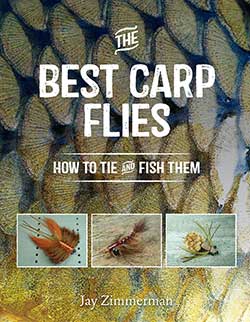How to Tie the Headstand
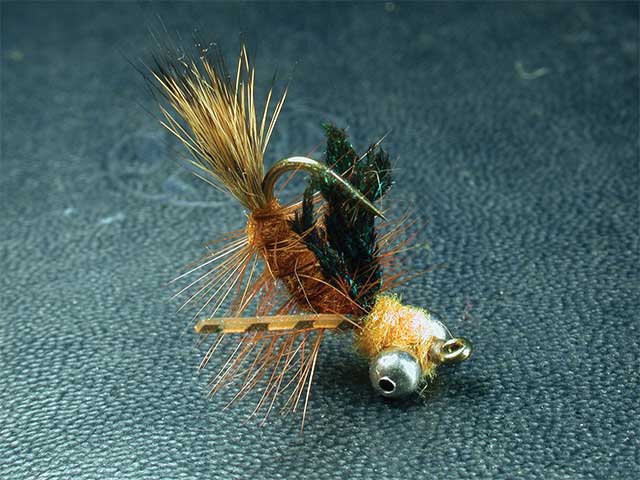
Egan’s Headstand has created an entire genre of carp flies. Almost any carp fly that is tied on a curved hook and designed to rest tail-up at the muddy bottom of a carp flat has been influenced by this groundbreaking pattern.
In fly-fishing circles, Lance Egan may be better known as a competitive fly fisherman than for his skill at the tying vise, although it is the latter talent that has undoubtedly had more impact on the lives of other anglers. If you have never heard the name Lance Egan and are not paying attention to, or care about, competition fly fishing, you may still have heard of some of the flies Lance has designed—the Iron Lotus, Frenchie, and the Rainbow Warrior. In fact, some of his nymphs have become so popular and widely used by trout fishermen that I would wager there is one of them in your fly box right now.
But maybe you are not a trout fisherman? Maybe you live somewhere in the Midwest, with no cold mountain streams a ready drive away? Maybe you are a carp head through and through. Fair enough. You should still have one of this man’s flies on your person—the Headstand. It is a good carp fly. Moreover, it is one of the early and influential flies created specifically for carp—light enough to cast easily and land softly, but heavy enough to sink in front of a tailing carp. The Headstand became commercially available through Umpqua Feather Merchants in 2006 and was one of the first carp flies designed to ride hook up, improving both hookups and reducing snagging on the bottom.
Lance grew up fishing in and around Salt Lake City, Utah, and cut his teeth on carp swimming in Pineview Reservoir, Willard Bay Reservoir, and the Bear River. Although the Headstand was born in Utah it quickly spread across state lines, popping up in fly shops around the country. It helped that Lance was a signature designer with the largest fl y wholesaler in the country, and it did not hurt that his previous fly, the Rainbow Warrior, had become a huge seller. The result was positive. The Headstand, a new and odd-looking fly, got picked up by a lot of fly shops—some that didn’t even know it was supposed to
be a carp fly!
The Headstand became an important fl y on the Front Range of Colorado during those crucial years when carp fishing was beginning to get more serious. From 2006 through 2008 it was one of only four fly patterns I carried in the fly shop in Boulder. It is an effective fly and is best fished to tailing carp that are relatively stationary, or to wary fish that are slinking around in shallow, clear water looking for food. The Headstand is tied on a curved hook, designed to rest on the bottom and be gently twitched by the angler; it is not a fly designed for cruising or faster-moving fish. But, above all else, this fly has influenced a distinct genre of carp flies that have sprung up all over the world.
Materials
HEADSTAND
Hook: #8 Tiemco 2457
Thread: Tan 140-denier UTC
Tail: Gold variant rabbit strip
Eyes: Silver bead chain eyes, medium
Hackle: Brown rooster hackle
Body: Rust Antron Sparkle Dubbing
Legs: Barred Pumpkin/Green-Orange Sili Legs
Wing: Peacock sword
Head: Fluorescent orange Antron Sparkle Dubbing
Head Cement: Hard as Hull

1. Secure the hook firmly in the vise. Begin the thread wraps at the rear of the hook shank and trim the excess thread. Mounting the curved hook at an angle offers a few advantages. You can begin your thread wraps at the rear of the shank without them sliding too far down the curve or accidentally getting cut by the hook point, and you can mount the tail on easier, as well.
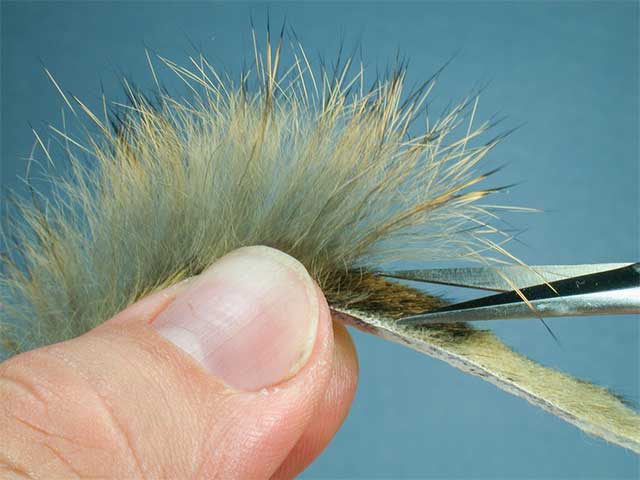
2. Cut a thick tuft of rabbit fur from a magnum rabbit strip. I prefer to use the magnum strips to the standard ones because it is easier to get the proper-sized tuft for the tail with a wider strip. Wet your fingertips and moisten the fur to make it easier to control and keep together.
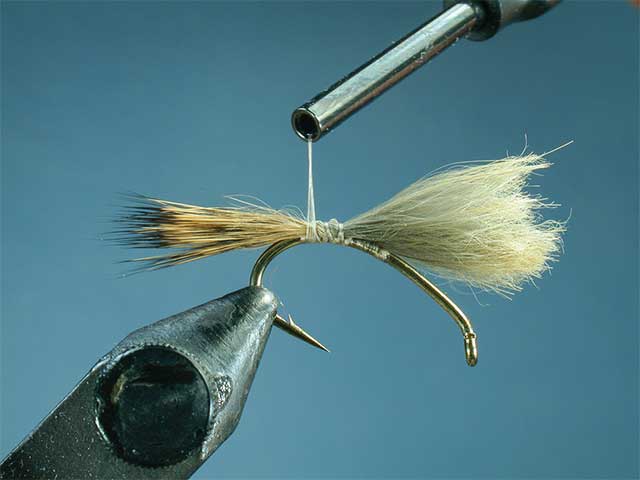
3. Tie the tuft of rabbit onto the top rear of the curved hook shank. Pluck out any stray or long fibers. The tail should be about a half inch long (13 mm).
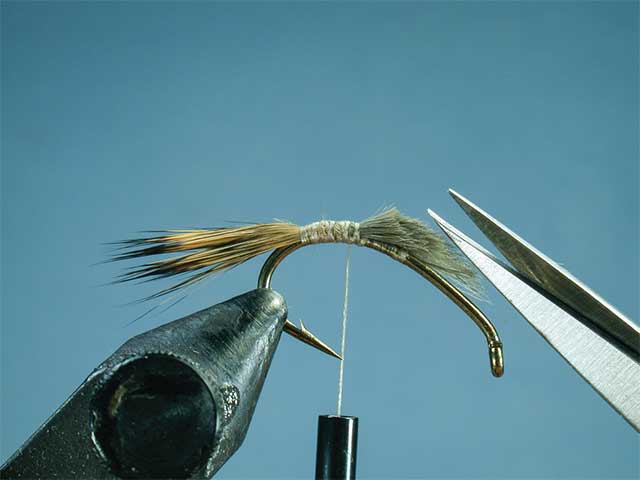 4. Trim the butt ends of the rabbit fur at a long angle. This will make wrapping thread (and other future materials such as dubbing and hackle) over the fur easier. This will also help you control the shape and taper of the body of the fly.
4. Trim the butt ends of the rabbit fur at a long angle. This will make wrapping thread (and other future materials such as dubbing and hackle) over the fur easier. This will also help you control the shape and taper of the body of the fly.
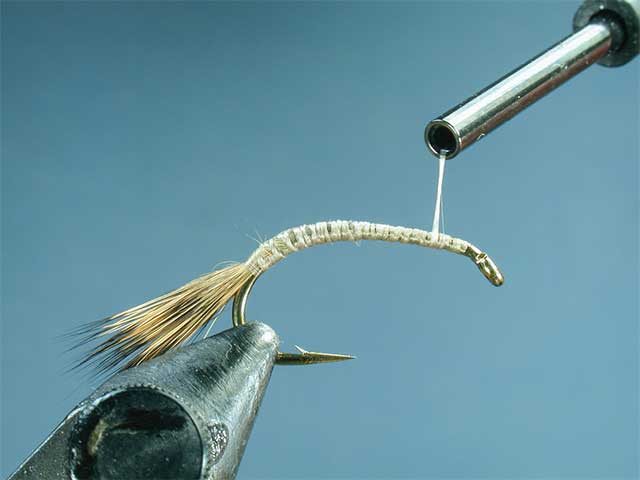
5. Reposition the hook. Wrap thread over the trimmed butt ends of rabbit fur and build a thin thread base to the hook eye. Bring the thread back from the hook eye just slightly to where you will mount the bead chain eyes.
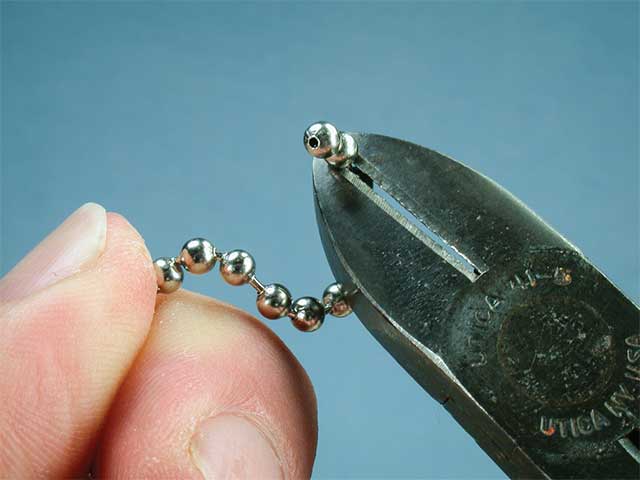
6. Use wire cutters to snip off a set of bead chain eyes.
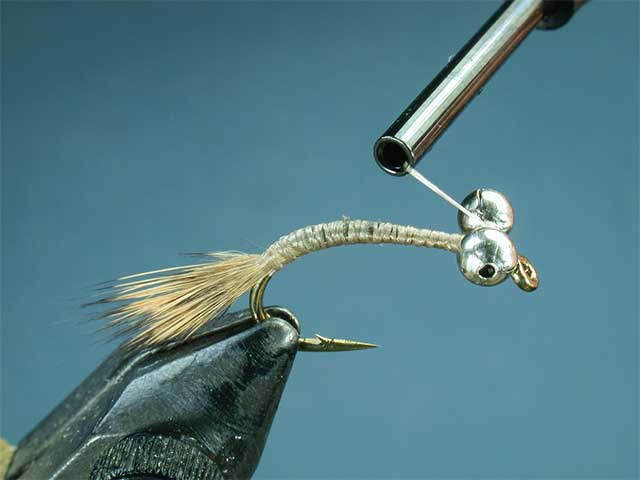
7. Tie in the bead chain eyes using several tight thread wraps going in both directions over the link connecting the individual eyes and then take a few figure-eight thread wraps for good measure. You can add a small drop of Zap-A-Gap on the tie-in point to prevent the eyes from swiveling on the hook shank once the fly is seeing action on the front lines.
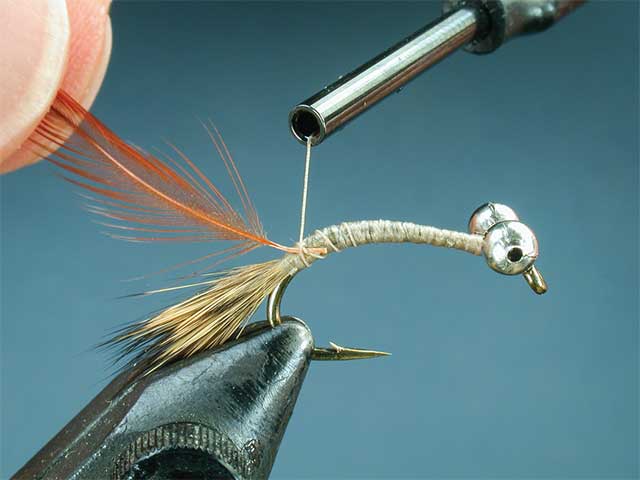
8. Wrap the thread back to the rear of the thread base and tie in the brown rooster hackle, which should be about four to five inches long and measure a size 12 or 14 on a Whiting hackle gauge. Strip off 1/8 inch (3 mm) of the fibers on the butt of the quill to make it easier to tie the feather down securely and prevent any brown hackle fibers from sticking straight back over the rabbit fur tail.
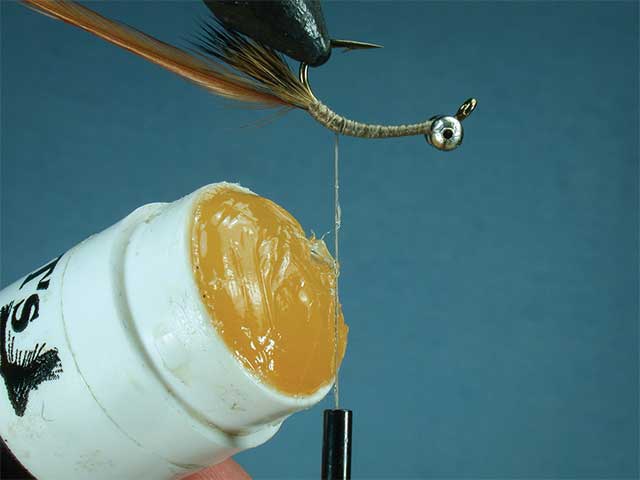
9. Rotate the vise so that the hook point is up. Let the bobbin hang down with several inches of thread exposed. Use a super tacky dubbing wax on the thread in preparation for applying the Antron body dubbing.
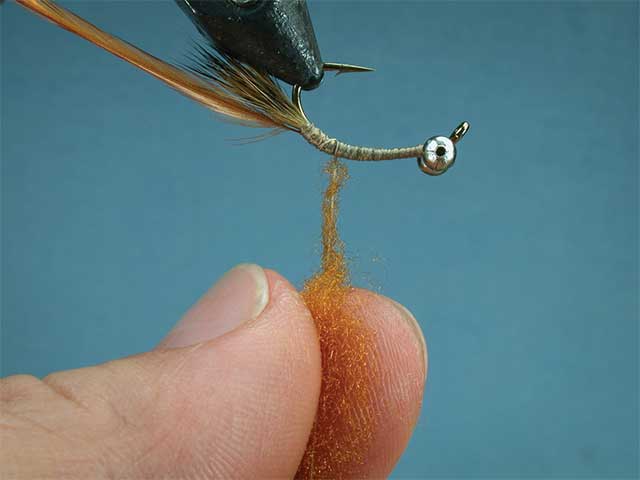
10. Roll on a fair amount of the rust-colored Antron dubbing to form a slim dubbing rope.
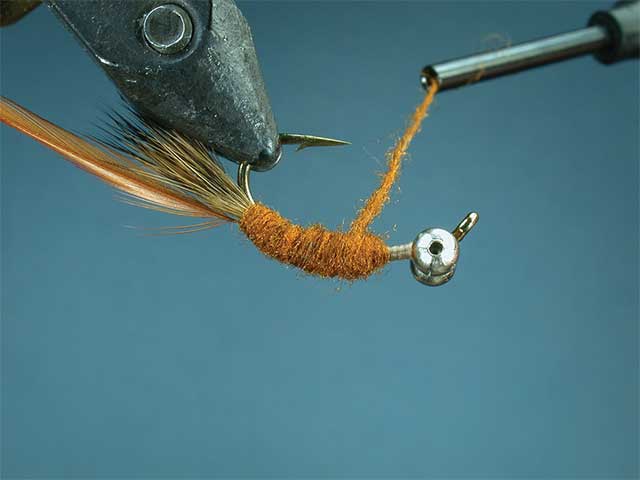
11. Build a stout, but short body with a slight taper—a tad fatter at the forward end. End the body well before you reach the eyes. You want to leave plenty of room to add other material.
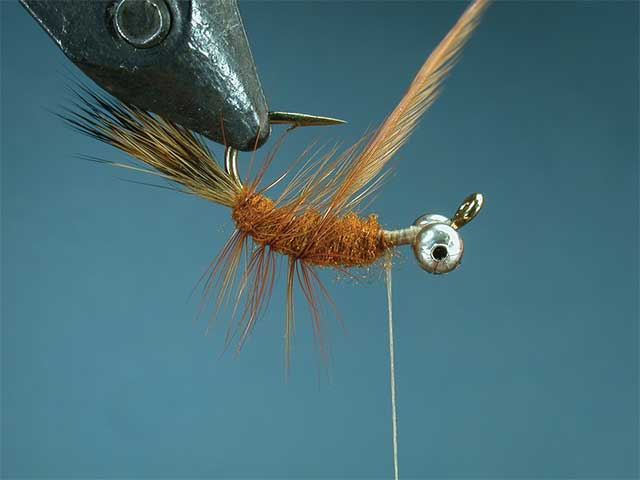
12. Grasp the rooster hackle with your fingers or a good set of hackle pliers and wrap it forward over the dubbed body with wide gaps—it should only take about five wraps of hackle to reach the end of the dubbed body.
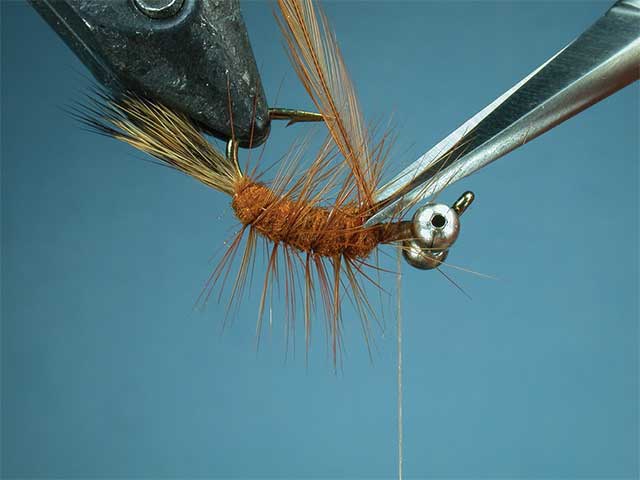
13. Tie off the hackle at the end of the dubbed body with two or three tight thread wraps. Trim the excess hackle with the tips of your scissors—be sure not to accidentally cut any of the upright hackle fibers on the body of the fly.
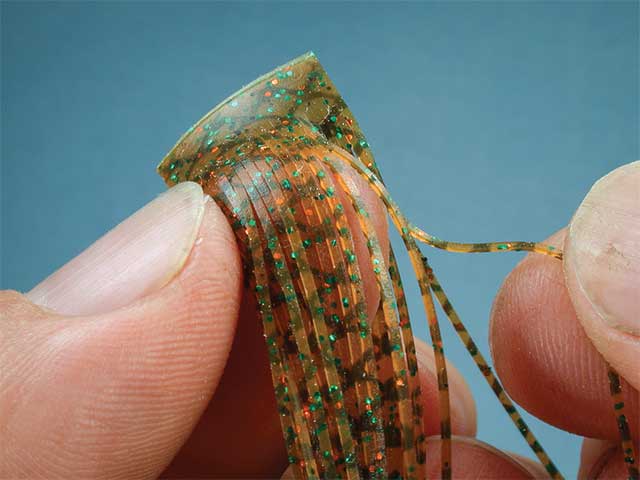 14. Select one strand from a bundle of Sili Legs.
14. Select one strand from a bundle of Sili Legs.
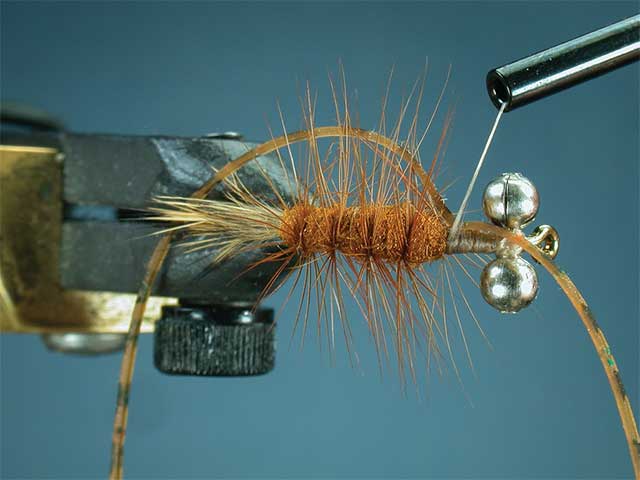
15. Tie in the Sili Leg onto the side of the fly body. Be sure to have the side that the black bar marks are printed on be the lead, or forward, side of the Sili Leg—this is not critical to the action or potency of the fly, but it is both naturally correct as well as cosmetically appealing.
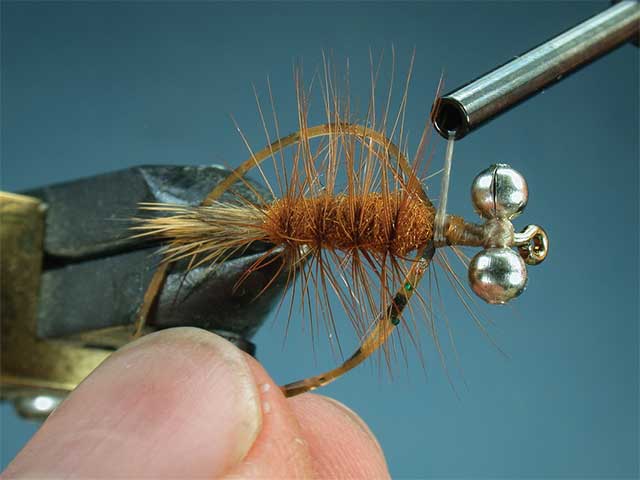
16. Pull the Sili Leg over to the other side of the fly and tie it into place.
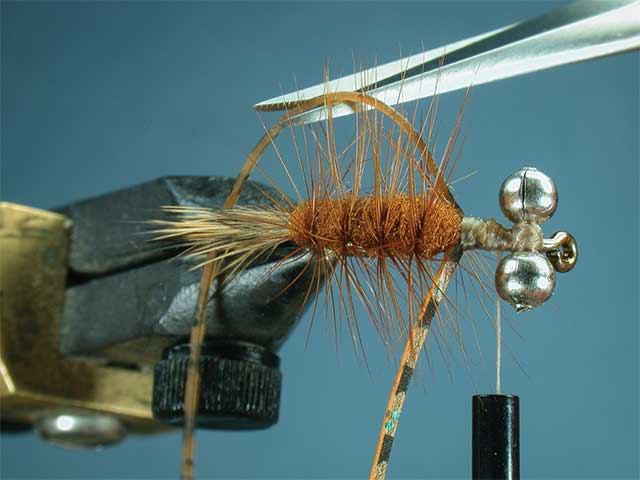
17. Trim the legs so that (when pressed close to the body of the fly) they extend only slightly past the end of the dubbed body. They should be about 1/2 inch (13 mm) long.
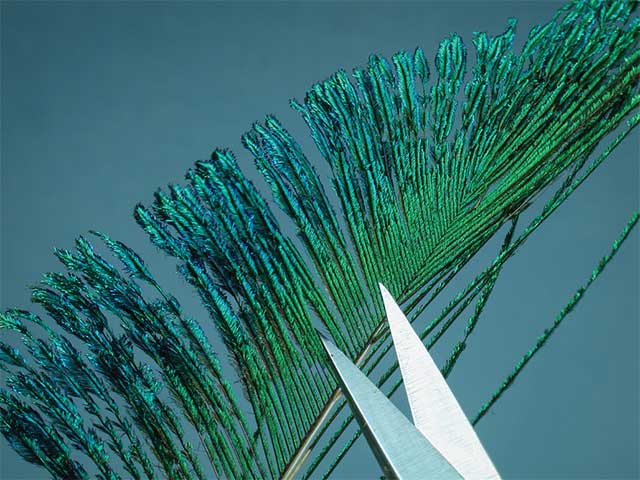
18. Select peacock “sword” fibers that are full and vibrant. Cut off about a dozen. Try to keep the tips as even as you can and all of the fibers curving in the same direction. If the clump gets askew, tidy them up before placing them onto the fly.
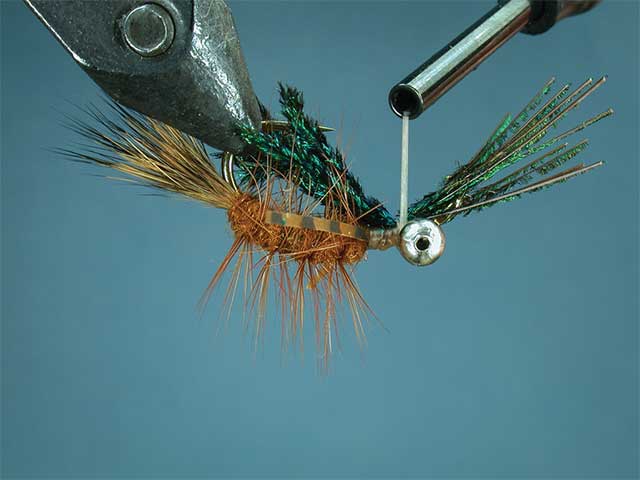
19. Tie the clump of peacock swords in behind the bead chain eyes and on top of the fly this will actually be the same side as the hook gape, as it is a fly pattern designed to ride hook point up. The swords should extend back just past the outside bend of the hook.
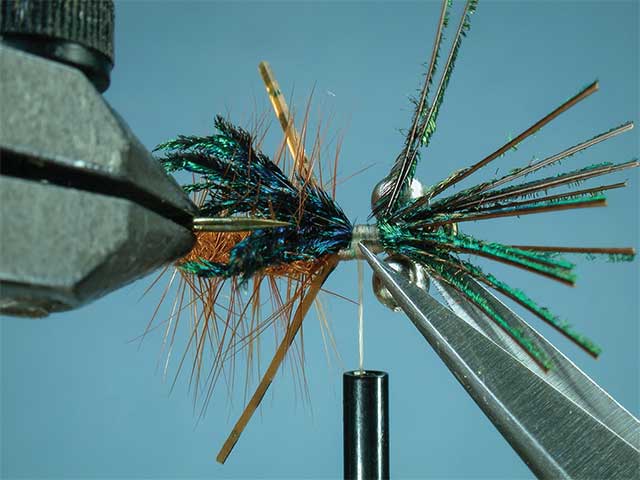
20. Trim the butt ends of the peacock as tight to the tie-in point as possible.
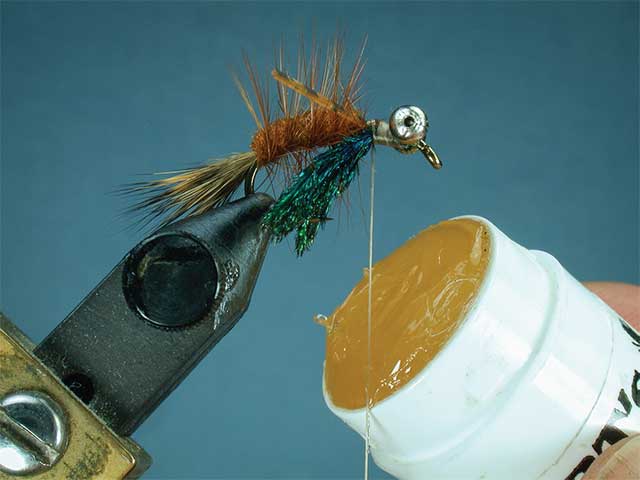
21. Rotate the fly back to the traditional upright tying position. Pull the bobbin down, exposing a several inch length of thread. Apply a bit of tacky dubbing wax to the exposed thread.
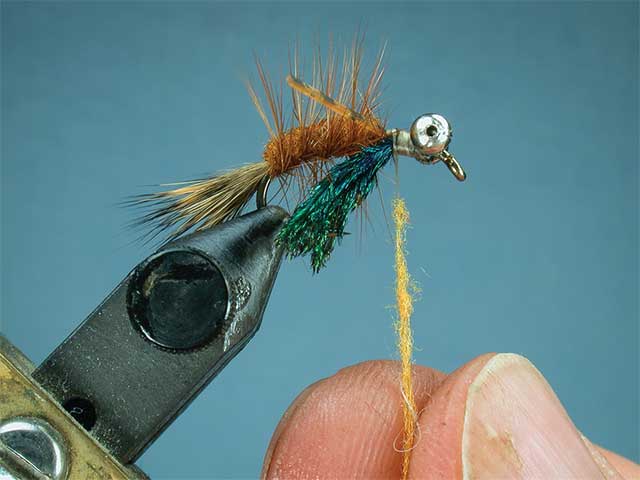
22. Roll some of the orange Antron dubbing onto the waxed thread, creating a slim dubbing rope.
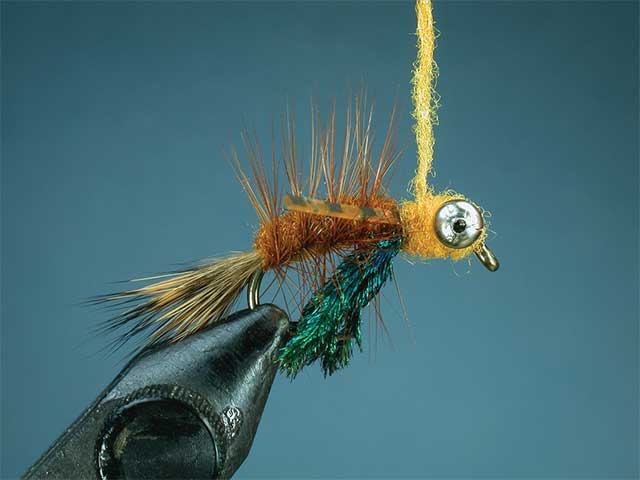
23. Wind the dubbing rope behind, around, and in front of the bead chain eyes to create a well-defined dubbing head. Finish at the front, between the bead chain and the hook eye.

24. Tie a whip-finish knot behind the hook eye and cut the thread. Apply a light coat of head cement to the finished knot.
